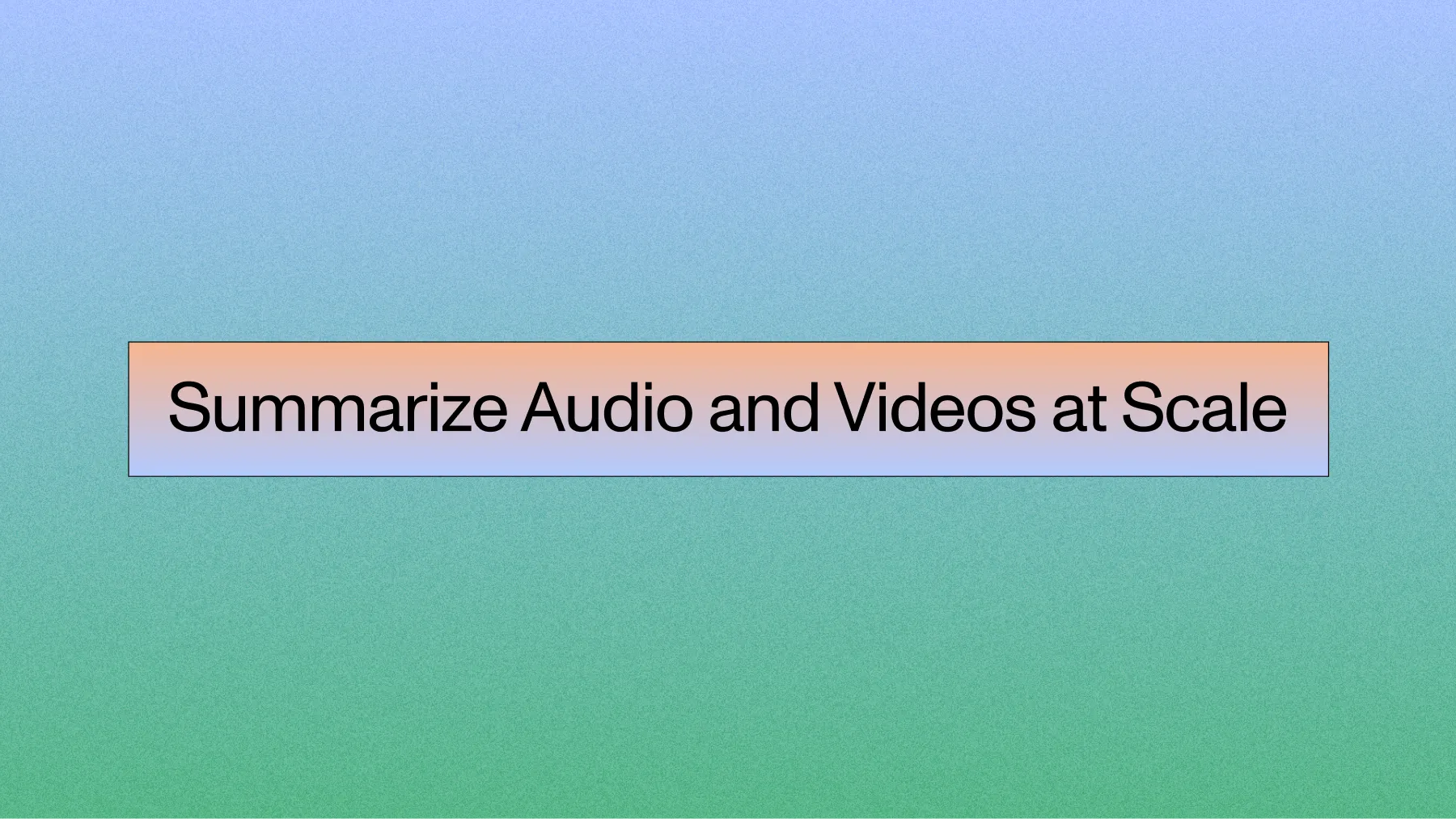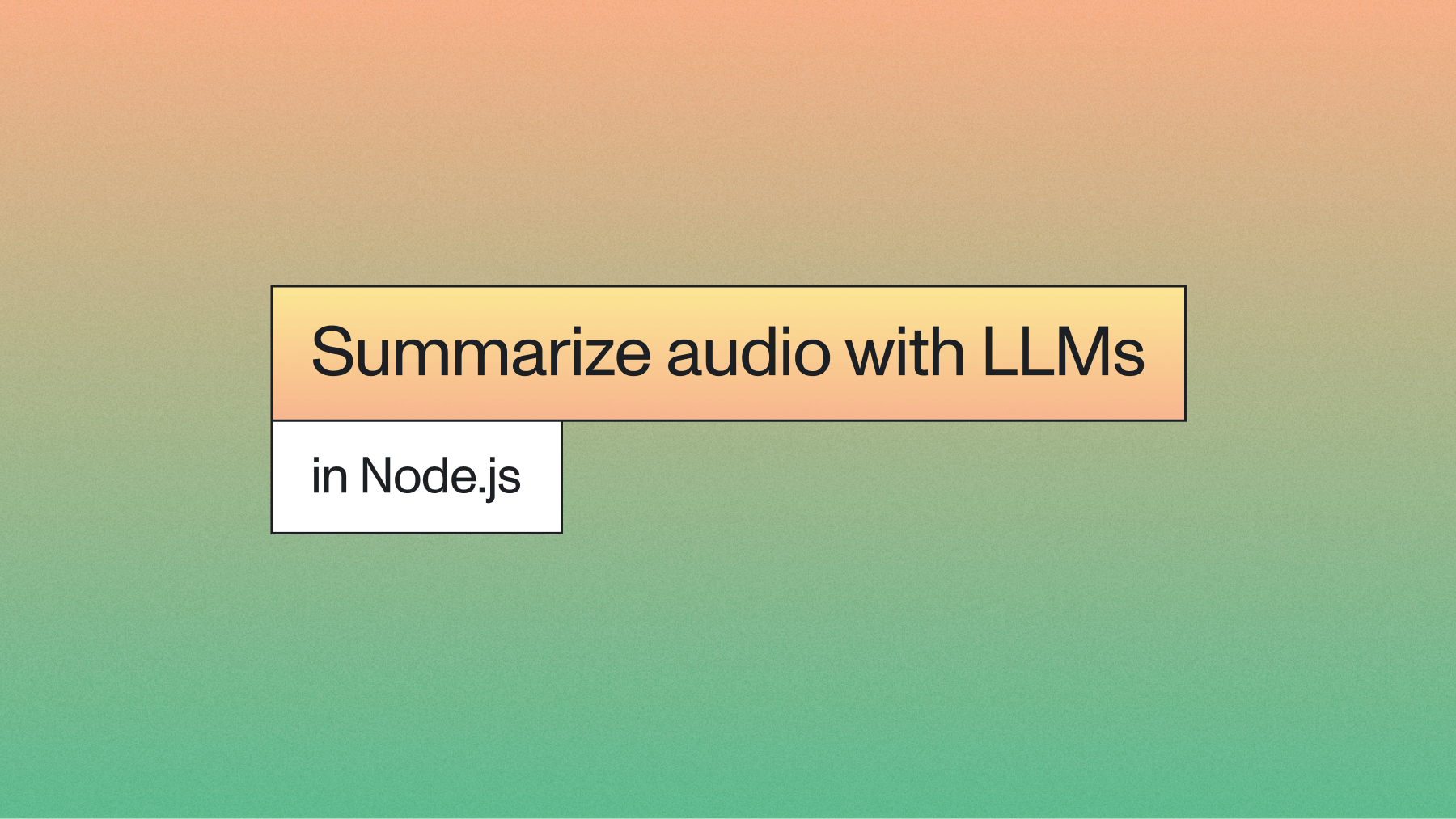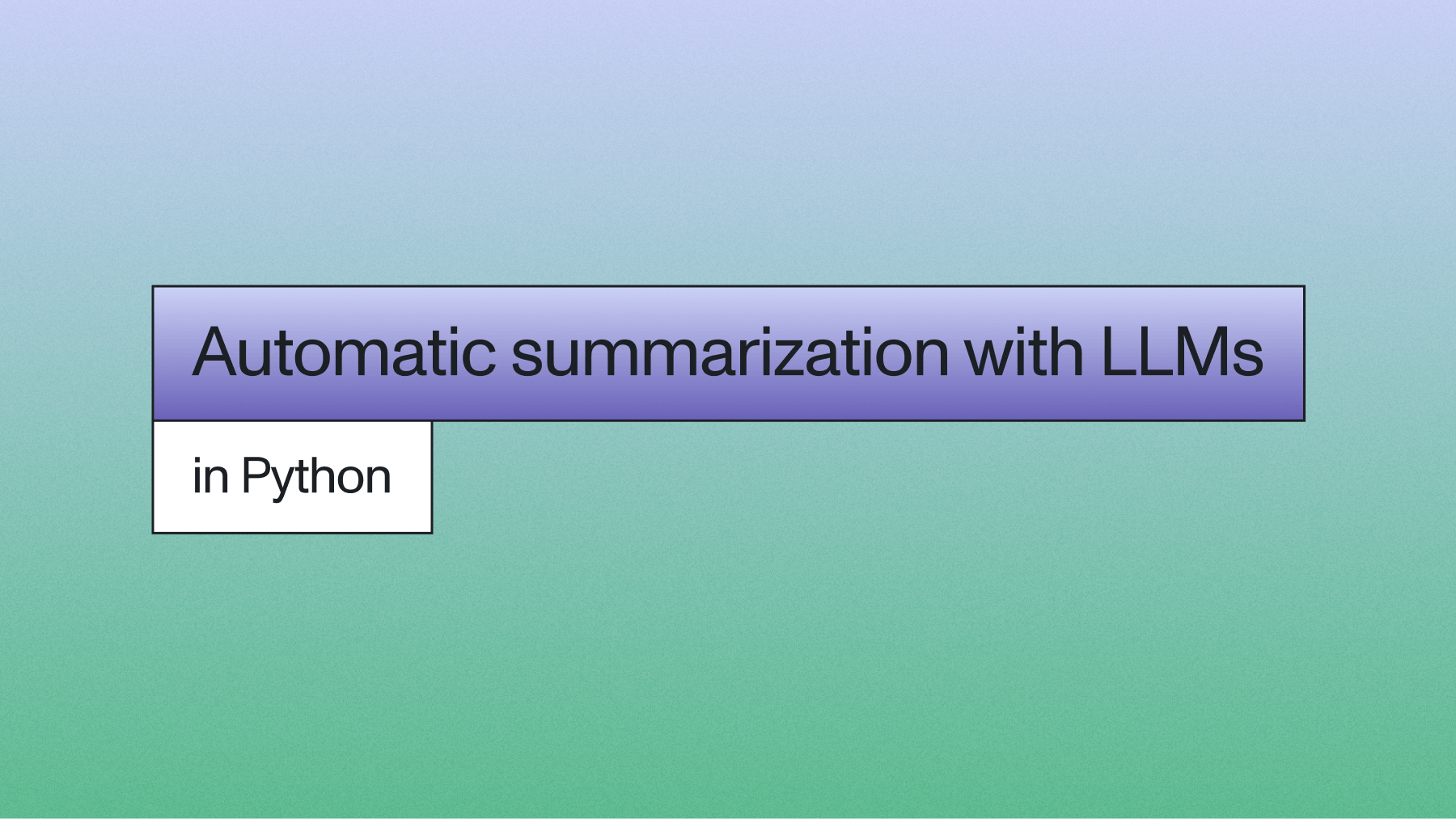How to use AI to automatically summarize meeting transcripts
Learn what AI summarization is, how it works, and how to use AI models and tools to automatically summarize meeting transcripts.

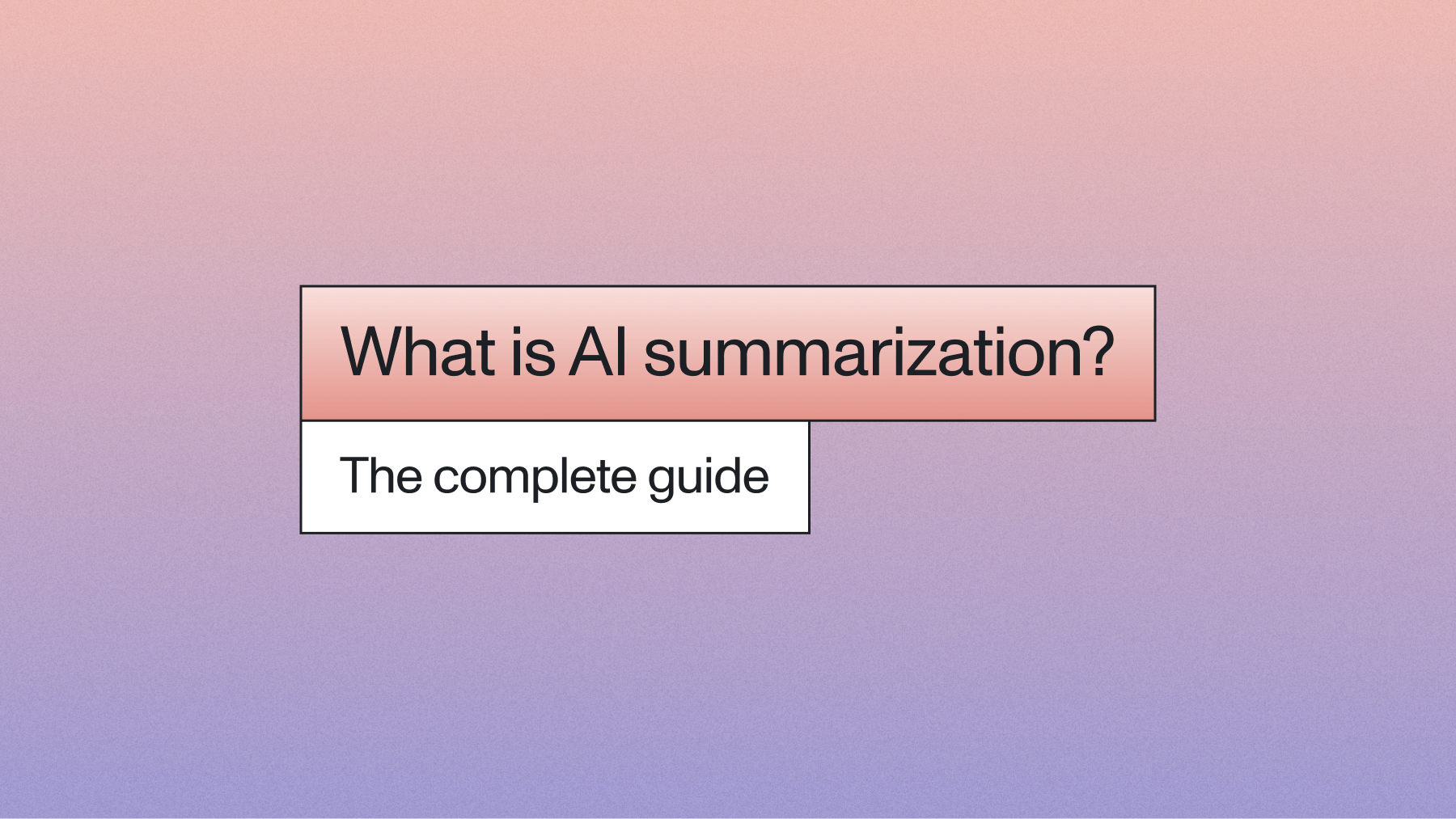

The use of virtual meetings by businesses increased from 48% to 77% from 2000 to 2022. While initially spurred by the pandemic, virtual meetings have now become a critical component of business communication, with one recent industry survey noting that conversation intelligence is now considered business-critical infrastructure.
Virtual meeting platforms leverage AI-powered features to automatically summarize meetings, extract key insights from notes, and recommend next steps post-calls. These capabilities transform hours of recordings into actionable intelligence, and research shows that AI summarization can deliver an ROI of over 395% for end users.
In this article, we'll examine using AI to automatically summarize meeting transcripts. We'll explore what AI summarization is, how it works, and the business benefits. You'll learn how to implement summarization yourself or choose the right platform for your organization.
What is AI summarization?
AI summarization automatically converts lengthy meeting transcripts and conversations into concise, actionable summaries that capture key decisions, action items, and insights. AI summarization models use advanced algorithms to identify the most important information from sales calls, customer meetings, and team discussions, eliminating the need for manual note-taking.
AssemblyAI's Summarization feature, a part of our speech understanding model suite, can be configured for various purposes. For example, you can select the conversational summary model, which is trained specifically on conversational data, making it more accurate for summarizing interviews, customer service calls, and more.
Why businesses are adopting AI summarization for meetings
Remote and hybrid work has increased virtual meeting volume by 77% since 2020. Key decisions, action items, and customer feedback get buried in hours of recordings that nobody has time to review.
Manual note-taking during meetings is incomplete and inconsistent, creating gaps that impact business outcomes. Recognizing this, companies are rapidly adopting new technologies; A 2025 trends report found that over 80% of businesses integrated conversation intelligence more than a year ago.
AI summarization creates real business value by automatically generating concise, accurate summaries of every meeting. Teams can focus on the conversation itself, not on capturing it. Companies like CallRail and Jiminny use AI summarization to help their customers surface critical insights from sales calls and customer interactions, leading to better coaching, improved win rates, and a clearer understanding of the market.
How does AI summarization work?
Text summarization methods are categorized into two groups: Extractive and Abstractive.
Extractive summarization models extract what they deem the most important sentence/s directly out of the original text. This method does not alter the original language used in the text, instead compiling the summary from the original language of the text.
Abstractive summarization models use AI to generate original summaries from the text. This method produces summaries that capture the salient information in the text, which may or may not include words and sentences from the original text.
This blog post explores how these different summarization methods work in further detail.
What are the benefits of AI summarization?
Companies implementing AI summarization report significant gains like 40% faster meeting follow-ups and 25% improvement in action item completion rates. The business impact extends across multiple operational areas, with a recent industry report finding that over 70% of companies saw measurable increases in end-user satisfaction.
Operational efficiency gains:
- Faster QA and call review — Reduces review time from hours to minutes
- Identifying key trends among aggregate call data — Surfaces patterns across hundreds of conversations
- Monitoring calls for key insights — Automatically flags important customer feedback
- Accurately summarizing calls for record-keeping — Ensures consistent documentation standards
- Increasing representative engagement — Eliminates manual note-taking during conversations
AI summarization for call coaching delivers similar productivity gains while enabling better context sharing between product, marketing, and customer success teams.
How to automatically summarize meeting transcripts with AI
If you would like to automatically summarize meeting transcripts using AI yourself, there are several approaches you can take.
Here are a few tutorials to follow, though note that some require knowledge of coding to implement:
Summarize audio transcripts in 30 seconds with Python
This video tutorial teaches you how to obtain a free AssemblyAI key, transcribe an audio or video transcript, and obtain a summary of the transcript using Python. You can also change the type of summary generated and the summary model used by adjusting the specified parameters.
Build a Streamlit app to summarize podcast episodes
In this video tutorial, you learn how to build a Streamlit app that automatically summarizes podcast episodes (or recorded meetings).
How to summarize meeting transcripts with no-code AI
There are also a few additional ways to summarize meeting transcriptions using no-code AI applications.
Use ChatGPT for meeting notes
If you're interested in summarizing meeting transcripts without any coding, one approach is to utilize ChatGPT. In order to get the meeting transcript, you'll first need to have a transcription of your meeting audio or video file. This can be obtained by running the file through a Speech-to-Text API such as AssemblyAI.
Then, you'll need to prompt ChatGPT to provide a summary of the transcript with a prompt such as "summarize the key points of this meeting." The more specific the prompt (i.e., provide the summary in bullet points) and the more context you provide (i.e., this is a performance review meeting), the better the summary will be.
A more detailed tutorial on using ChatGPT to provide meeting notes and summaries can be found here.
Upload your meeting audio file to AssemblyAI's playground
Alternatively, you can obtain a detailed summary without the extra step of transcribing the file first using a no-code AI playground like AssemblyAI.
Simply upload the audio file you would like then toggle on AI models and/or endpoints to output a summary that best matches your requirements. Options include:
- Summarization: Summarize your audio file into bullet points, a gist, headline, or paragraph using one of AssemblyAI's summarization models (informative, conversational, or catchy).
- LLM gateway: Leverage LLM capabilities to create custom summaries of your audio data.
- Auto Chapters: Summarize your audio file into chapters with timestamps.
Then, you'll receive both an accurate transcription of your meeting, as well as a summary based on your chosen models and features above.
Top AI companies to use to summarize meeting transcripts
If you're looking to summarize virtual meetings in bulk, or would like to take advantage of additional AI-powered tools and features on top of AI summaries, these AI companies offer advanced AI summarization tools to try.
Fireflies.ai
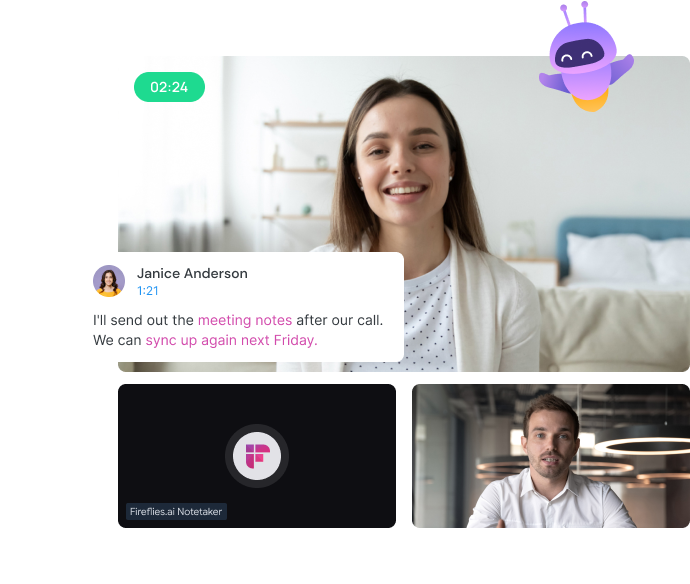
Source: Fireflies.ai
Fireflies.ai is an AI voice assistant that automates meeting transcription, summarization, and note-taking for virtual meetings.
Key integrations: Google Meet, Zoom, Microsoft Teams, WebEx, HubSpot, Salesforce, and Slack.
Core features: The AI Super Summaries tool provides detailed meeting overviews, outlines, keyword lists, and action items automatically. This enables easier team collaboration and deeper conversation intelligence analysis.
Sembly AI

Source: Sembly AI
Sembly AI is an AI team assistant that transcribes, takes meeting notes, and generates intelligent insights for virtual meetings.
Key integrations: Google Meet, Microsoft Teams, and Zoom. Available in 35 languages across web, iOS, and Android mobile apps.
Core features: After each virtual meeting, Sembly presents a focused digest displaying a short summary, meeting outline, key topics, and meeting insights. Its Semblian tool lets users ask questions or auto-generate post-meeting tasks like composing emails or next steps.
Grain
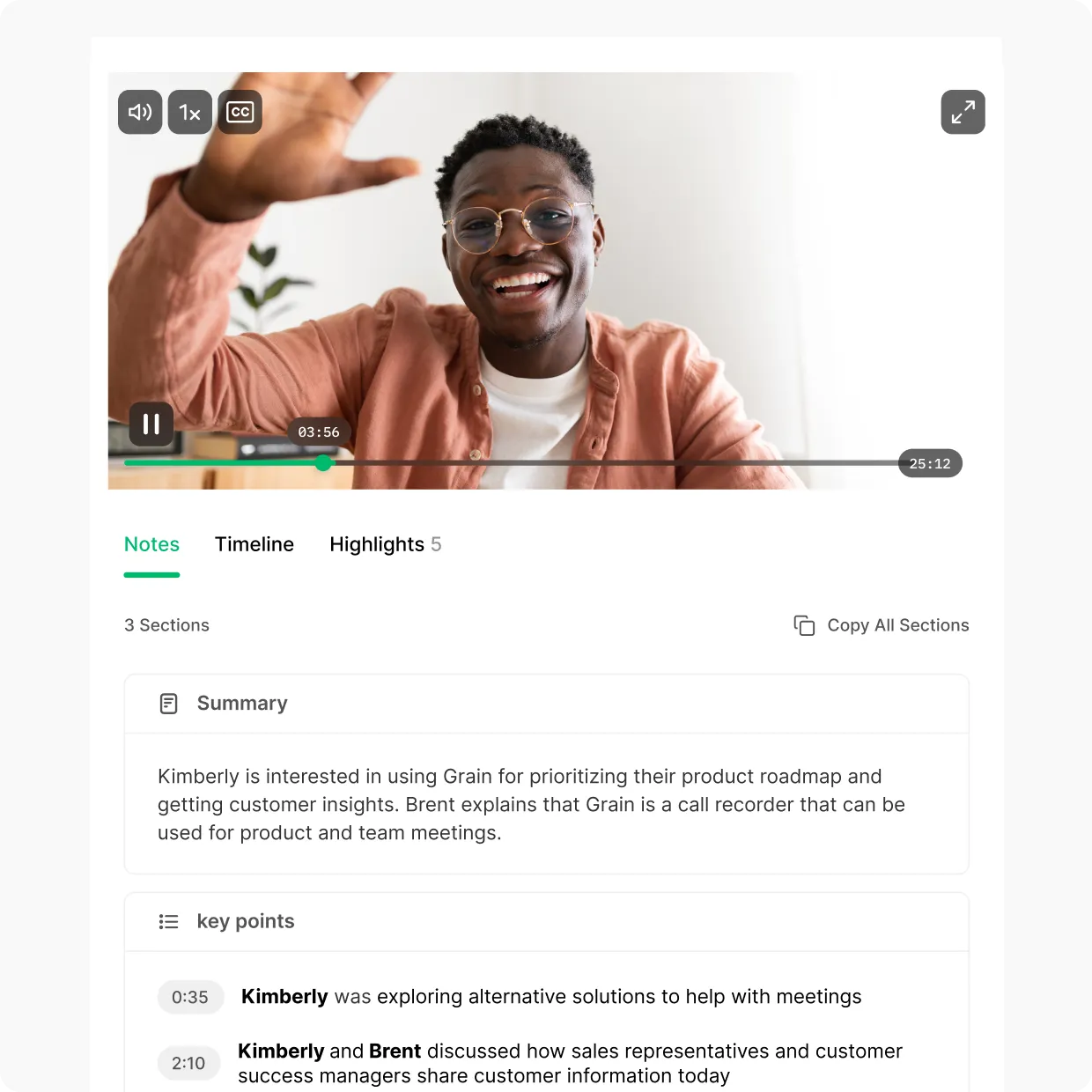
Source: Grain
Grain is an AI-powered meeting recorder that integrates with popular online meeting platforms to record, automate note-taking, and capture insights from internal and external conversations.
Key integrations: Slack, HubSpot, and Salesforce for automated note distribution.
Core features: Grain's automated meeting notes tool provides clickable timestamps with summaries and key points for each call. Users can highlight key moments in transcripts, use AI to summarize specific sections, and create shareable video clips from important discussions.
CallRail

Source: CallRail
CallRail is a lead intelligence software company that helps customers build more meaningful relationships on sales calls, increase ROI on sales tracking, and drive overall community impact.
Core features: Its AI-powered Conversation Intelligence feature summarizes each call processed through its platform into a few sentences, helping users understand calls at a glance. Additional features include sentiment analysis, identifying industry trends, call scoring, and more.
These AI-powered features, including AI Summarization, helped the company double the number of its Conversation Intelligence customers.
Callbox
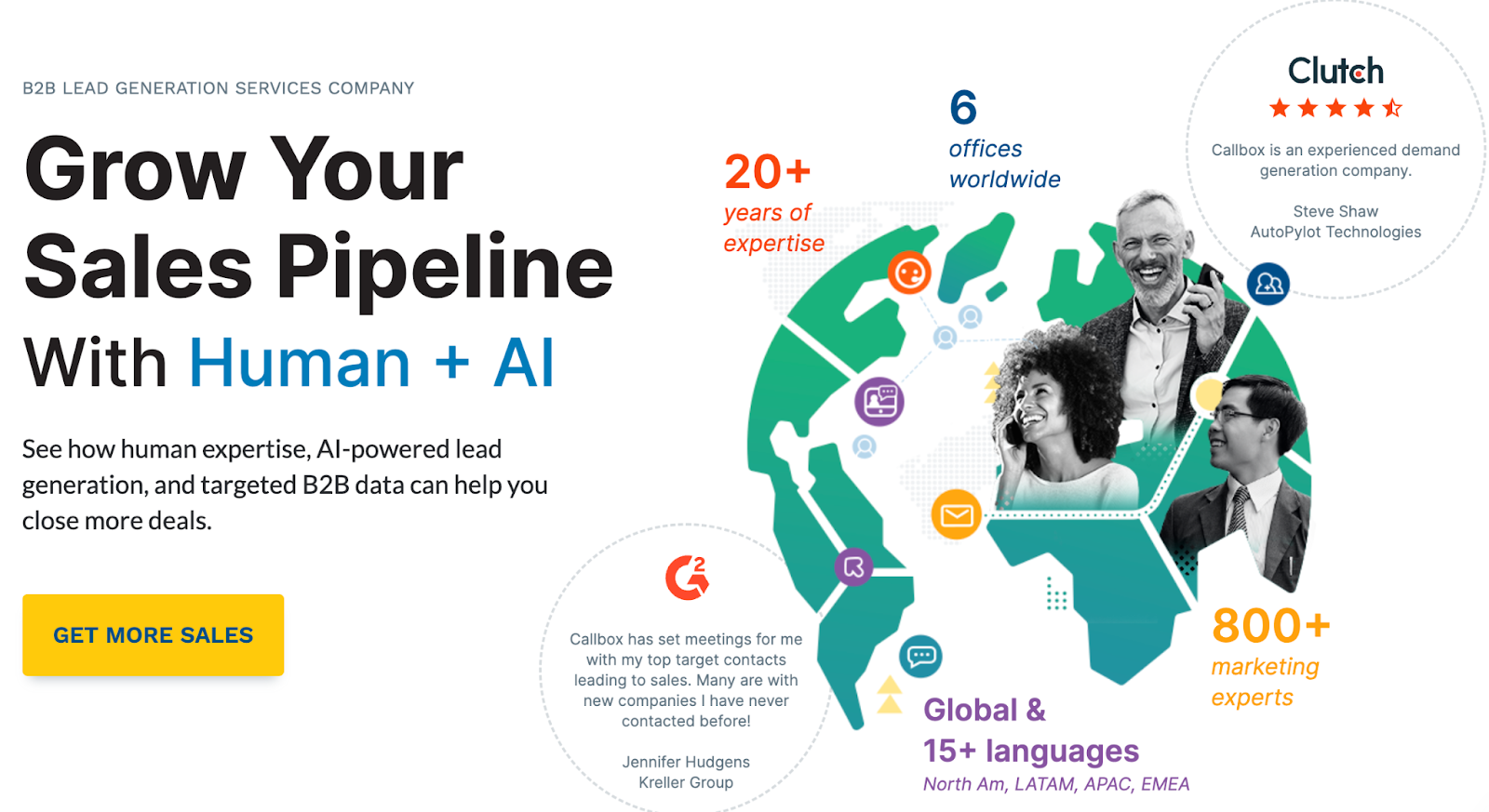
Source: Callbox
Callbox is a global lead generation company focused on helping users grow sales pipelines with both human and AI-powered tools. Callbox uses a multi-channel approach to reach prospects, generate MQLs and SQLs, and convert more leads into closed deals.
Key integrations: HubSpot and SMART Calling for optimal prospect engagement timing.
Build enterprise-grade meeting summarization
Talk with our team about secure deployment, SLAs, and pricing. Get guidance on accuracy, scalability, and integrations for high-volume meeting data.
Core features: Its AI Summarization feature summarizes all calls into short snippets in its platform. This enables better lead management and follow-up strategies across sales teams.
Jiminny
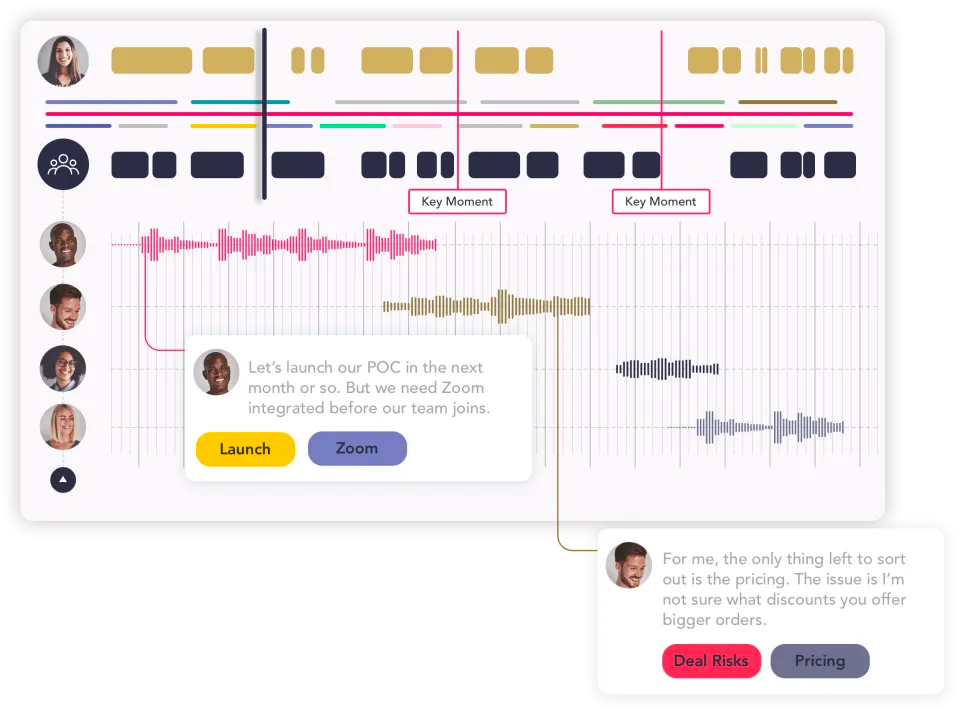
Source: Jiminny
Jiminny is a leading Conversation Intelligence, sales coaching, and call recording platform. Sales and customer success teams use its platform to manage and analyze all conversational data, helping the teams fine-tune sales techniques, build better customer relationships, and secure 15% higher win rates for its customers.
Key integrations: Zoom, Google Meet, Microsoft Teams, and all major meeting platforms.
Core features: The Jiminny notetaker automatically joins, records, and transcribes conversations. The platform then summarizes conversations into key moments and performs additional analysis. Users can use the "Ask Jiminny" feature to submit questions about calls and receive AI-generated responses.
Enterprise implementation considerations for AI summarization
Enterprise AI summarization deployments typically take 3-6 months when security, scalability, and accuracy requirements are properly planned. Technical leaders who skip this planning phase often face delays, compliance issues, and poor user adoption.
Three critical requirements separate pilot projects from production-ready systems:
Security: When dealing with sensitive meeting data, robust security measures are paramount, as a recent survey found that data privacy and security were a significant challenge for over 30% of product leaders. Look for certifications like SOC 2 Type 2 and options for Business Associate Agreements (BAAs) if you handle protected health information.
Scalability: Your solution must be able to handle your workload as you grow, from a few dozen meetings a day to thousands of hours of audio per month, without outages or performance degradation.
Accuracy: The summary is only as good as the transcript it's based on, and as industry research confirms, 'If the words are wrong, the outcomes are too.' The underlying speech-to-text model must be highly accurate across a range of accents, background noise, and industry-specific terminology to produce reliable results.
Transform your meeting intelligence with Voice AI
Automatically summarizing meeting transcripts is a powerful first step, but it's just the beginning. The real competitive advantage comes from building on this foundation with a comprehensive suite of speech understanding models.
Once you have an accurate transcript and summary, you can layer on other capabilities like action item detection, sentiment analysis, and topic extraction to build a complete meeting intelligence platform. This allows you to not only know what was said, but to understand the meaning and intent behind the words.
Building these features starts with a powerful and easy-to-use API. If you're ready to see what's possible when you build with production-ready Voice AI models, you can try our API for free.
Frequently asked questions about AI summarization for meetings
Is there a free AI summarizer?
Yes, many free AI summarization tools exist for testing and one-off tasks. For production business workflows, you'll need a commercial API that offers enterprise security and reliability.
Is it okay to use AI to summarize?
Absolutely—AI summarization increases productivity and extracts valuable insights from conversations. The key is using high-quality models with human oversight for critical applications.
Can I customize the summary format?
Yes, modern AI models support multiple output formats including bullet points, paragraphs, action items, and custom templates. AssemblyAI's LeMUR framework enables fully customizable summary generation.
Lorem ipsum dolor sit amet, consectetur adipiscing elit, sed do eiusmod tempor incididunt ut labore et dolore magna aliqua. Ut enim ad minim veniam, quis nostrud exercitation ullamco laboris nisi ut aliquip ex ea commodo consequat. Duis aute irure dolor in reprehenderit in voluptate velit esse cillum dolore eu fugiat nulla pariatur.

